
Pin on Chemical Sciences
Reversible Changes Any changes which can be reversed or are a temporary conversion are known as reversible changes. The reactions which are reversible are called reversible reactions. In this reaction, one substance is modified into another form but a new compound is not formed.

PPT Reversible Process PowerPoint Presentation, free download ID527789
A reversible change changes how a substance looks or feels (changing the physical appearance), and it is easy to turn it back again. A reversible change may change the state of a substance such as, solid, liquid and gas. However, a reversible change does not change the amount of matter in a substance.
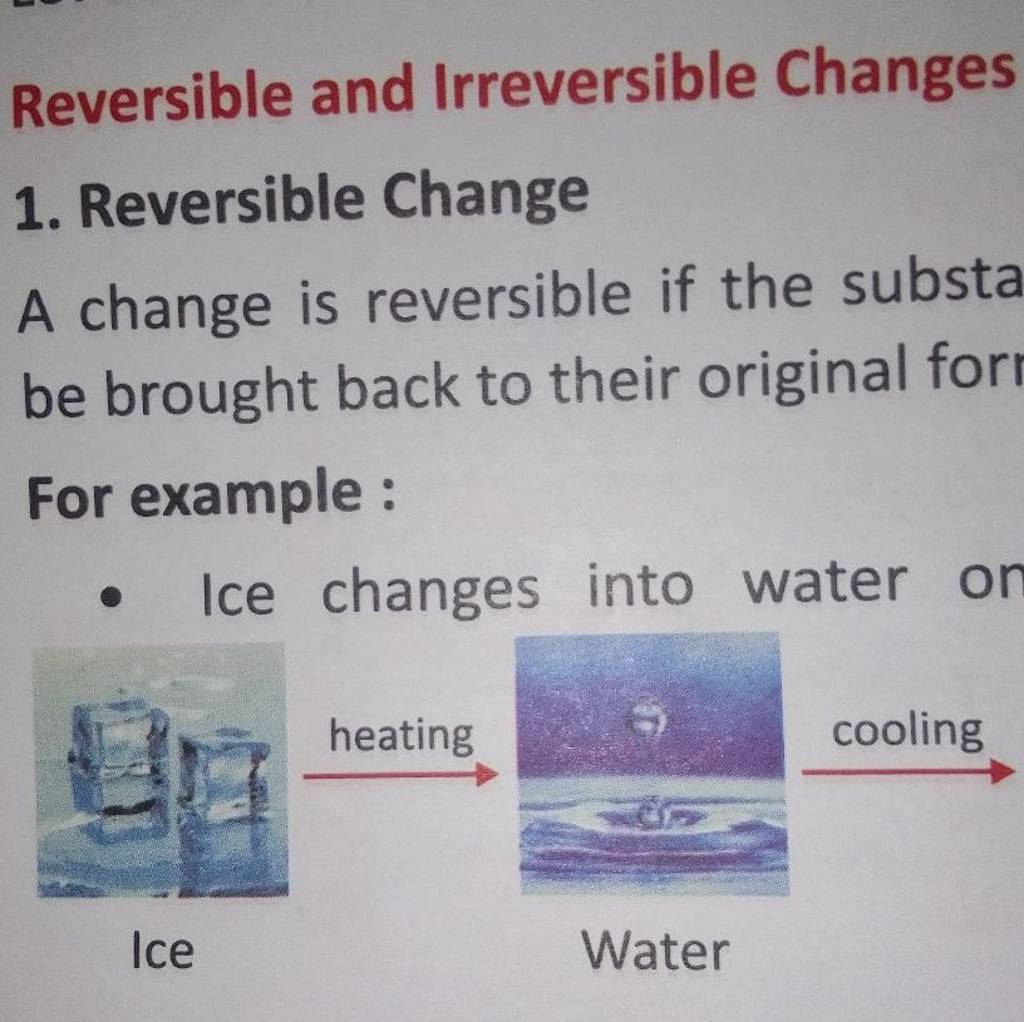
Reversible and Irreversible Changes 1. Reversible Change A change is reve..
Reversible changes or physical changes are changes that can be undone or reversed. Melting, freezing, boiling, evaporating, condensing, dissolving and also,.

Reversible vs irreversible changes 🤔 What's the difference? Learn with examples YouTube
A reversible change is a chemical change where no new materials are created and the original material can be recovered. Examples include freezing water to make ice or melting chocolate. What's the difference between a reversible change and an irreversible change?

Reversible And Irrevesible Changes
Examples of Physical Changes. Remember, the appearance of matter changes in a physical change, but its chemical identity remains the same. Crushing a can. Melting an ice cube. Boiling water. Mixing sand and water. Breaking a glass. Dissolving sugar and water. Shredding paper.
Blog Bilingüe de Ciencias del Tercer Ciclo / Bilingual Resources for Social and Natural Sciences
Reversible and Irreversible Changes- Science Animation Class 6th The changes taking place can be categorized into two parts: (a) Reversible Change Show more Show more Introduction to Chemical.

Reversible Changes or Physical Changes Reversible Changes Examples Physical Changes Examples
A reversible change is a chemical change where no new materials are created, and the original material can be recovered. Examples include freezing water to make ice or melting chocolate. What's the difference between a reversible change and an irreversible change?
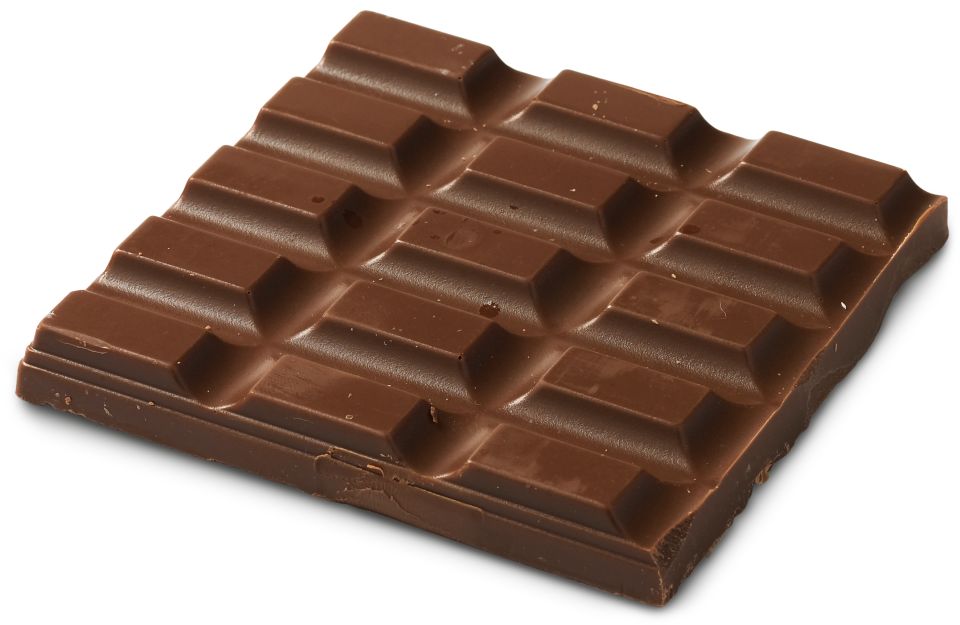
Reversible and Irreversible Chemical Reactions DK Find Out
A change that can be reversed or we can get back its original substance (shape) is called a reversible change, e.g., stretching of a rubber band, a balloon changing its size, shape on blowing air into it, water changing into ice on cooling, wax changes into liquid on heating, etc. Some Reversible Change Examples i.
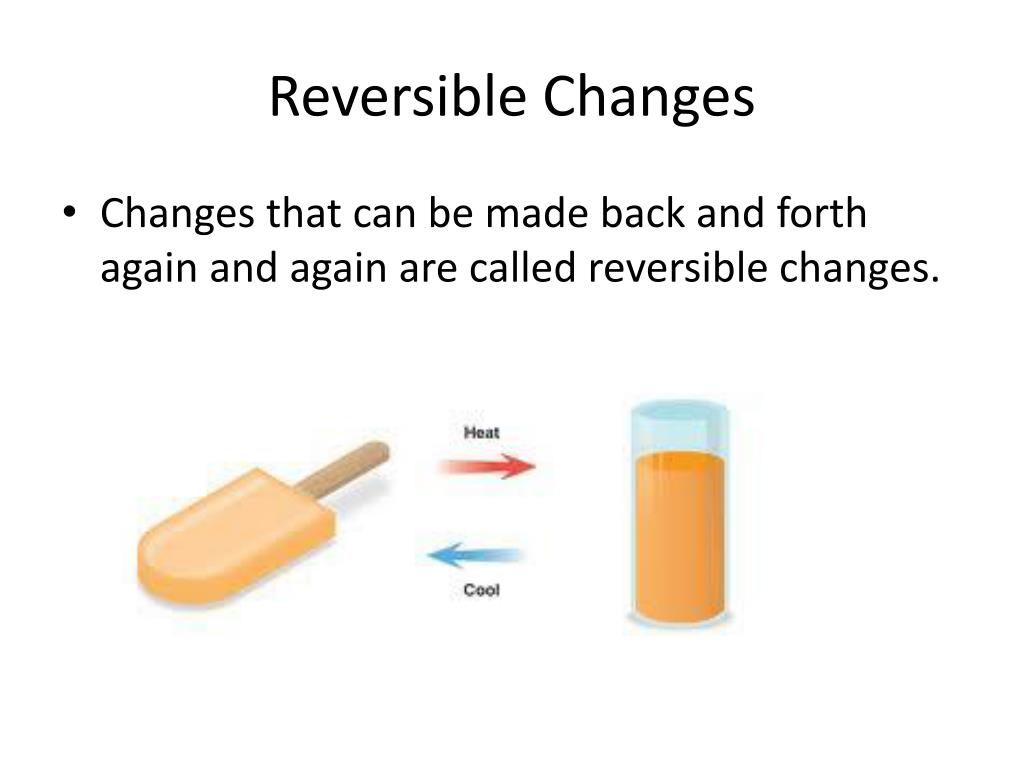
PPT Types of Changes PowerPoint Presentation, free download ID2730493
Reversible change Evaporation is taking place: a liquid is turning into a gas. Condensation is taking place: a gas is turning into a liquid. Both evaporation and condensation are taking place. These labels are for sticking onto a Venn diagram for sorting the cards. http://www.collaborativelearning.org/reversiblechange.pdf

Reversible And Irreversible Changes
This worksheet forms part of lesson titled, 'What does reversible and irreversible change mean', which covers the following science topics: Graphs and pictures explaining the difference between temporary and permanent transformations; Chemical reactions (when sugar crystals dissolve), reversible reactions (when chocolate melts), and.
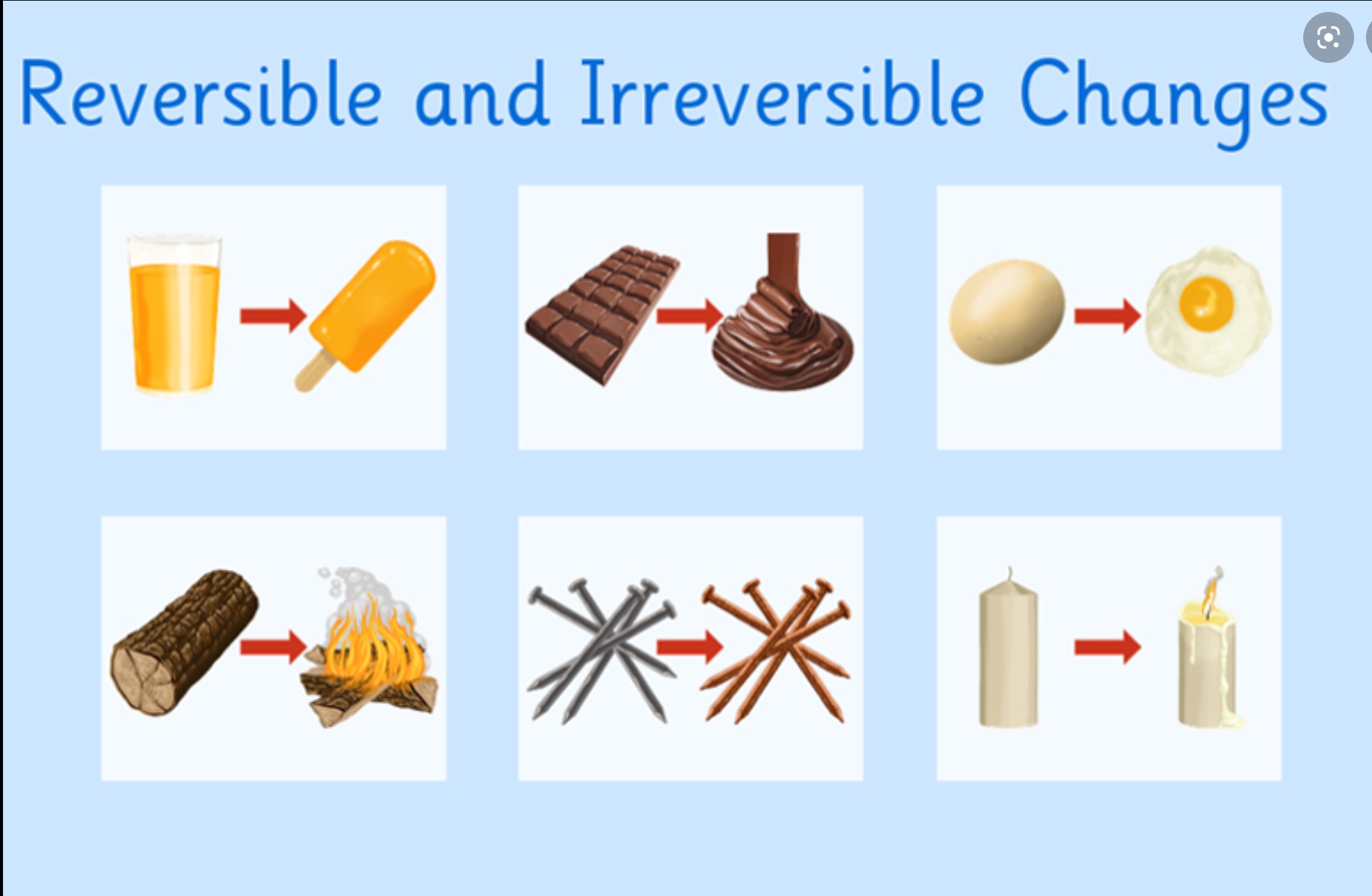
Reversible And Irreversible Changes ! 159 plays Quizizz
Reversible Changes. A change which can be reversed to form the 'original substance' is called a reversible change. Ice is a solid substance. When we heat ice, it melts to form liquid water. A change from solid to liquid takes place during the melting of ice. If we cool the water from ice to water, by heating, has been reversed by cooling.

What is a Reversible and Irreversible Change? Online Physics Video Guide YouTube
9,240 reversible change stock photos and photography are available royalty-free. See reversible change stock video clips Image type Orientation Color People Artists AI Generated More Sort by Popular Money and Financial Concepts Car Types Jobs/Professions Motor car Water filter Reverse osmosis Plumber Coin Gear stick Automatic transmission of 93
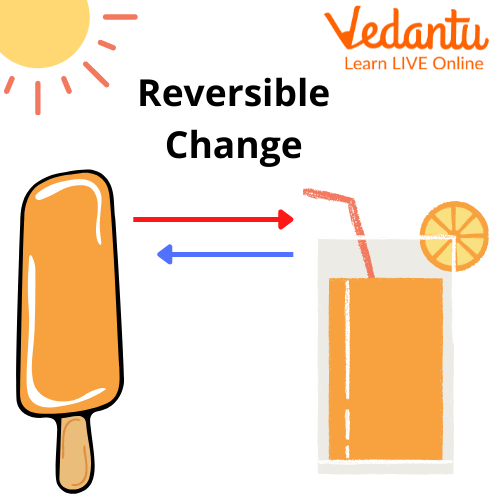
Reversible Changes and Irreversible Changes Learn Important Terms and Concepts
Explore more than 46 "Reversible And Irreversible Changes Picture Sort" resources for teachers, parents and pupils as well as related resources on "Reversible And Irreversible Changes Powerpoint". Instant access to inspirational lesson plans, schemes of work, assessment, interactive activities, resource packs, PowerPoints, teaching ideas at Twinkl!

what is meant by reversible change and irreversible change? Explain with example Brainly.in
Changing by Heating or Cooling Heat is commonly used to change substances. Some of these changes can be reversed by cooling, but others are irreversible. This depends on the properties of the substance that is being heated and cooled. Reversible Changes When water is heated and cooled it goes through a series of reversible changes.
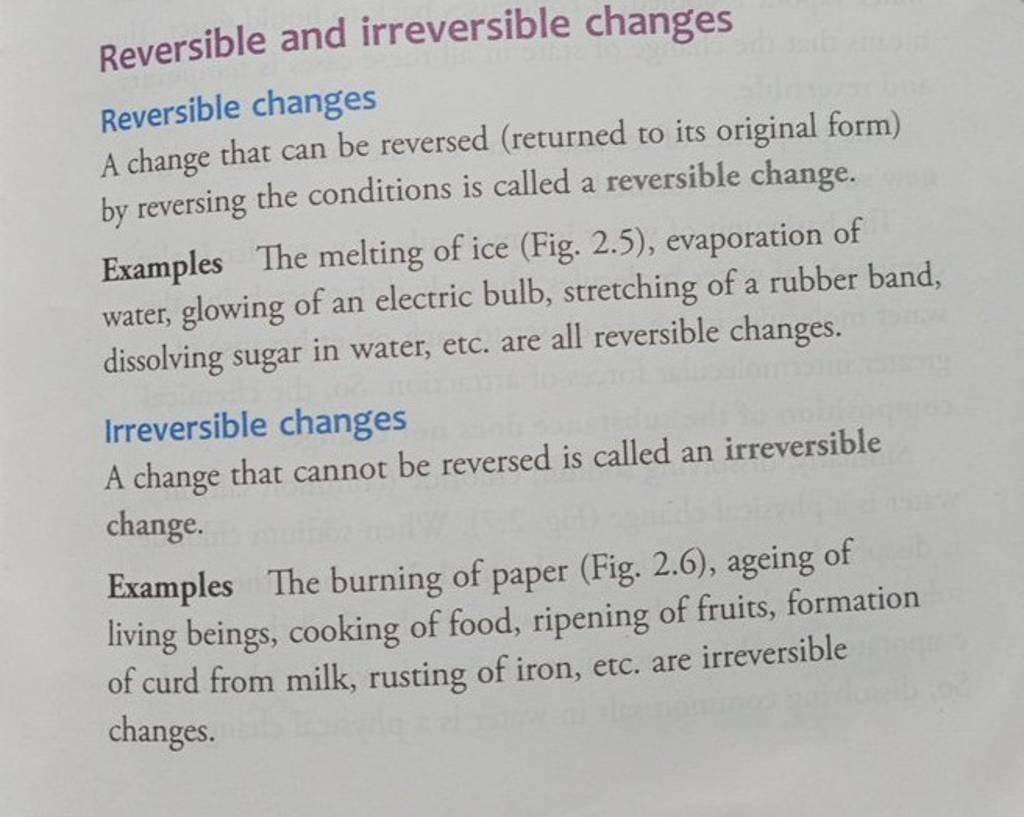
Reversible and irreversible changes Reversible changes A change that can
As the name suggests, reversible changes are those changes whose effect can be reversed. Reversible means something that can be traced back to its original form. This article discusses about different types of changes that take place. Then we will discuss about reversible change in particular and then see different examples of reversible change.

Reversible & Irreversible Teaching chemistry, Chemical and physical changes, Physical change
A reversible change might change how a material looks or feels. It sometimes creates new materials. Image caption, Freezing is a reversible change. For example you can freeze juice to make ice.